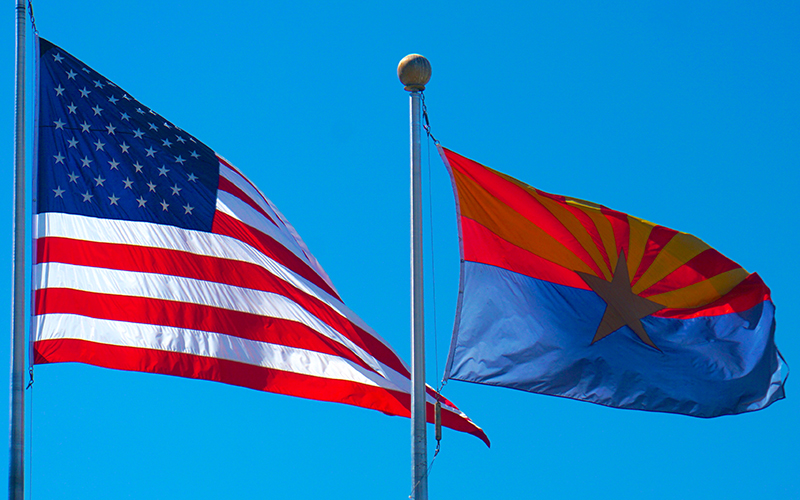
As Arizonans get ready to cast their ballots in November’s general election, post-primary polls show how close the gubernatorial race is.(Photo by Ted Eytan/Flickr)
PHOENIX – One recent poll gave Arizona Gov. Doug Ducey the edge against Democrat David Garcia. Another showed the two were neck-and-neck. A third – much earlier poll – predicted Garcia would lead in a hypothetical matchup with Ducey, who’s seeking a second term.
But which polls should you believe?
Political experts say that depends on a number of factors, including who conducted the poll, the audience that was reached, how the questions were worded and when the poll was conducted. Interpreting the results can get tricky.
And the public might not put much stock into polling after the 2016 presidential election in which most polls had predicted Hillary Clinton would win over Donald Trump. One Business Insider article detailed the results of an autopsy by major pollsters who examined what went “wildly wrong” in that election.
The article quoted Patrick Murray, the head of Monmouth University Polling Institute, who said, “Polls might not be capable of predicting elections.”
However, Michael Dimock, president of Pew Research Center, defended the polling industry. In a Pew article, he said the polls were accurate by historical standards. (Clinton did win the national popular vote, he points out.)
“Well, polls may have been an accurate representation of voter preferences at the time they were taken,” he said. “But preferences can change, particularly in a fast-moving campaign.”
With just weeks left before the vote, the race has heated up with both campaigns trading barbs. Ducey’s campaign has called Garcia’s positions on border security, education and the economy “extreme,” according to an azcentral.com article. And Garcia’s Twitter account includes jabs at Ducey, saying he’s “pulling a fast one” on voters on the issue of charter school reform and that Arizona voters don’t trust Ducey.
Ducey and Garcia are set to debate at 5 p.m. Sept. 24 on Arizona PBS.
To help voters better read the tea leaves in political polls, Cronkite News spoke with Mike Noble, chief pollster and managing partner of OH Predictive Insights in Phoenix. The interview has been lightly edited and condensed.
What should people know about polling and how should they digest it?
With polling in general, make sure it has that margin of error under 5 percent, and check the credibility of the organization. If the poll is from someone you’ve never heard of, I would probably be suspect. Also, I think with their transparency, do they show the numbers? I truly believe that with good polling, it will make sense to folks when the numbers are put out. You’re going to have what we call outliers. I would say just look at who’s doing it, why their doing it and also, what’s their motivations?
Does the duration of polling affect the results?
Look at how long they’re doing it for. So if someone polled over a two-week time period, that’s something that I would be very suspect about because those opinions can change, especially in the era of Trump tweets and 24-hour media coverage. What the mood was two weeks ago compared to those voters’ moods a week or so later can change. … I would typically only want to be in the field two, three, four days … five at most before I would cut off a poll.
Do polls prompt discussion about political races?
One of the interesting things about polling is that it really does create a conversation on the race itself. The candidates are running and you’re going to see a lot of ads of one side, obviously pushing their end, and you see the other side pushing their end. A poll is very interesting to see where the state of the race is, and I do believe that it probably brings up, “Hey, did you see that recent poll?” They will discuss it and see about it and then of course discuss the race. I think polls really do increase the dialogue and awareness of the race.
Can polling predict final results?
Ideally, you want to have the winner within that margin of error. You’ll see that margin of error at 4 percent, and you know someone is going to win by 47 and won by 50, 51. You called the winner. Anyone who says they know what turnout is going to be on Election Day is kind of full of it because we really frankly just aren’t going to know until early voting begins.
Cronkite News reporter Gabriella Bachara contributed to this story.
–Video by Gabriella Bachara
Subscribe to Cronkite News on YouTube.